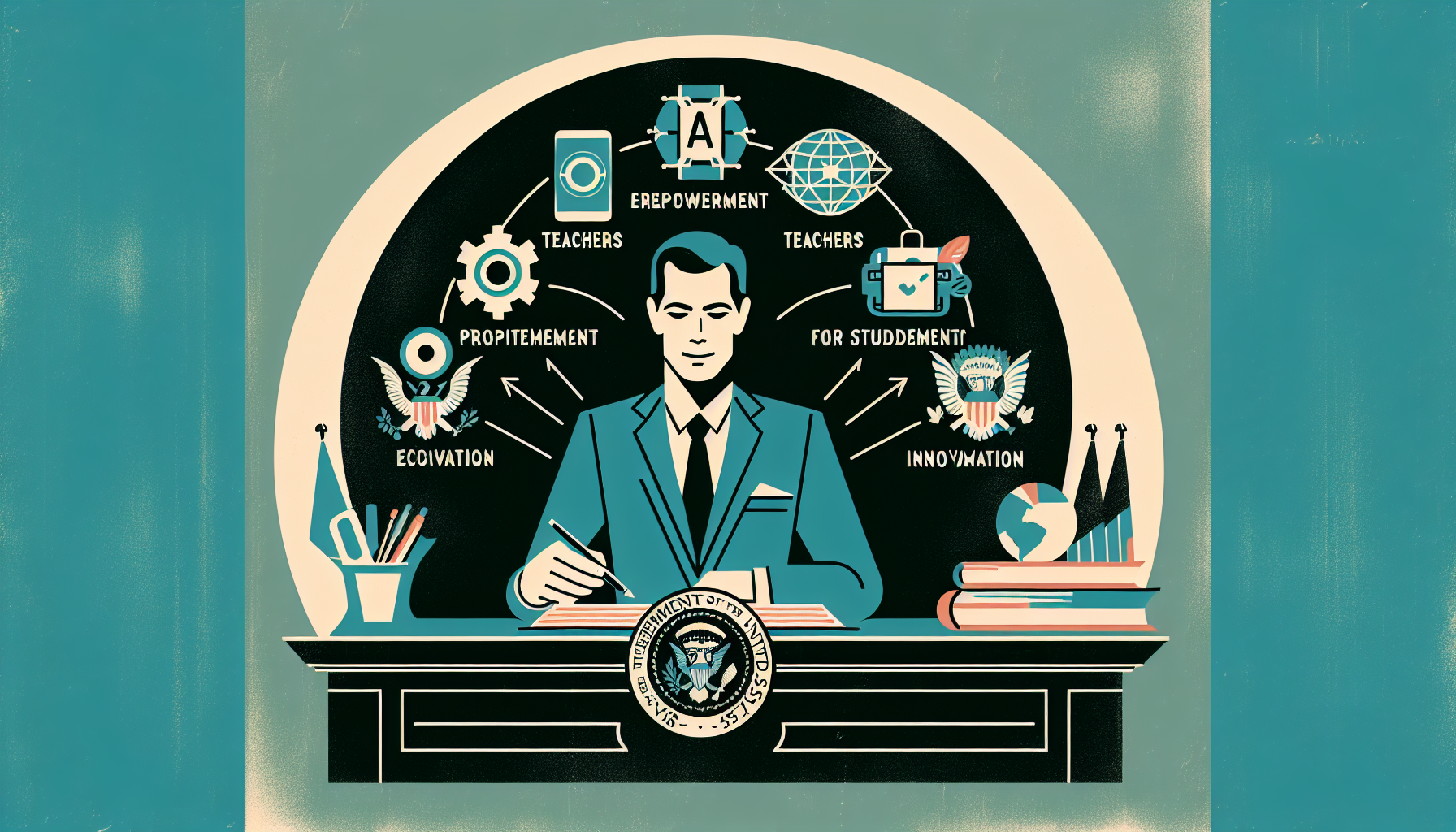President Trump has signed a new executive order that seeks to transform how artificial intelligence (AI) is taught and understood in schools across the United States. This important step is meant to prepare young Americans for a world where AI plays a central role in everyday life and future careers. The initiative unfolds through several key actions designed to support students, empower teachers, and encourage innovation.
A Focus on Leadership and Vision
The heart of this initiative is a White House Task Force on AI Education. Led by Michael Kratsios, Director of the White House Office of Science and Technology Policy, the task force brings together leaders from education, labor, and technology. Members include Secretary of Education Linda McMahon, Secretary of Labor Lori Chavez-DeRemer, and Special Advisor David Sacks, each lending unique expertise and commitment to the mission.
Presidential AI Challenge
One of the first actions of the Task Force is the launch of a Presidential AI Challenge. This national competition will invite students and teachers to showcase their achievements in AI, aiming to spark imagination and passion among young innovators. By highlighting creative uses of AI, the challenge hopes to inspire schools across the country to embrace new technologies and ideas.
Strengthening Partnerships and Support
Recognizing the power of working together, the initiative urges close partnerships between government agencies and private industry. These public-private collaborations are designed to bring the newest technology and resources directly into classrooms, ensuring students have the best tools for learning. The task force is also responsible for finding federal funds and grants to support K-12 AI education, making resources available where they are needed most.
Preparing Teachers and Students
Great teaching is at the core of strong education. That’s why the initiative makes teacher training a top priority. The U.S. Department of Education is called upon to develop and fund programs that help teachers feel confident and prepared to teach AI. Equipping educators with the proper knowledge will ensure that students receive high-quality instruction and guidance on this complex subject.
But learning about AI isn’t just about the classroom. The U.S. Department of Labor will expand opportunities for students to participate in AI-related apprenticeships. These real-world experiences allow students to connect what they learn in school to jobs and careers in AI fields, bridging the gap between education and employment.
The National Science Foundation (NSF) is also playing a crucial role. It will increase research on how AI can be used to improve education itself, creating new tools and teaching methods that make learning even more effective and engaging.
Building the Workforce of Tomorrow
This initiative is rooted in a straightforward belief: the future belongs to those who are ready for it. Secretary of Education Linda McMahon has emphasized how important it is for schools to keep up with the demands of a rapidly changing workforce. By aligning school activities with what employers and communities need, the initiative aims to help every child find a place in the future economy.
Overcoming Challenges and Embracing Opportunities
Despite the promise of this initiative, challenges remain. Budget adjustments in recent years have strained some programs, but the executive order seeks to keep AI education at the forefront by prioritizing it in new grants and research. With a focus on collaboration, resourcefulness, and commitment, these challenges are being addressed directly.
The opportunities are significant. By teaching AI in K-12 schools, students gain an early understanding of this important technology. They will be better prepared for jobs that require AI skills, making the nation stronger and more competitive. Partnerships with industry will ensure schools have access to the latest knowledge and tools, and teachers will have the support they need to guide and inspire their students.
President Trump’s initiative stands as a meaningful investment in the future of American education. Through its support of teachers, students, and innovation, the initiative offers a path forward—one where the next generation can confidently shape and lead in a world powered by AI.

Leave a Reply